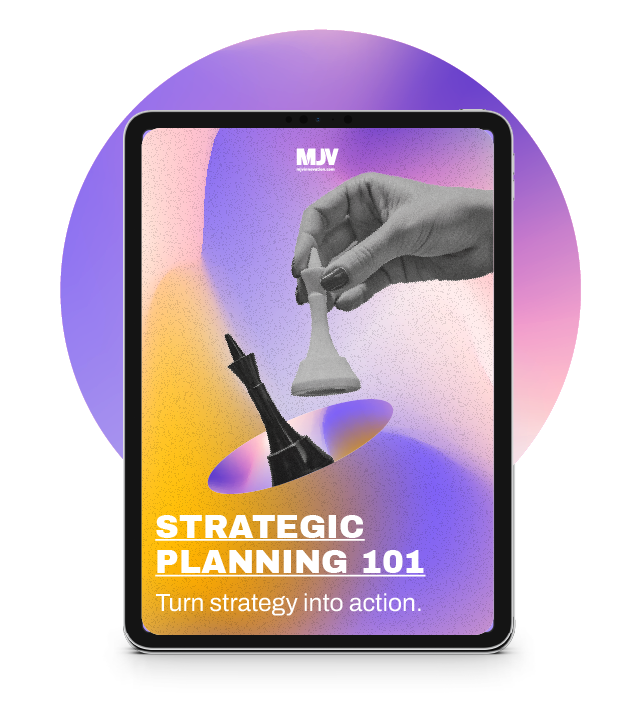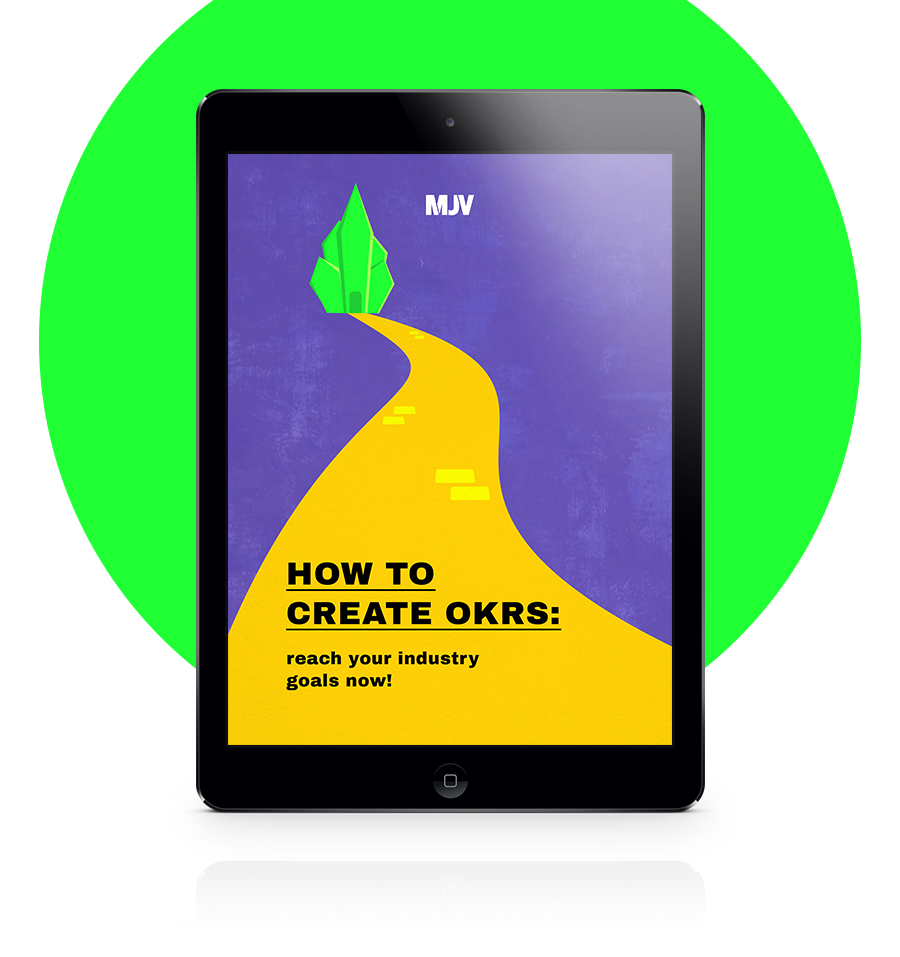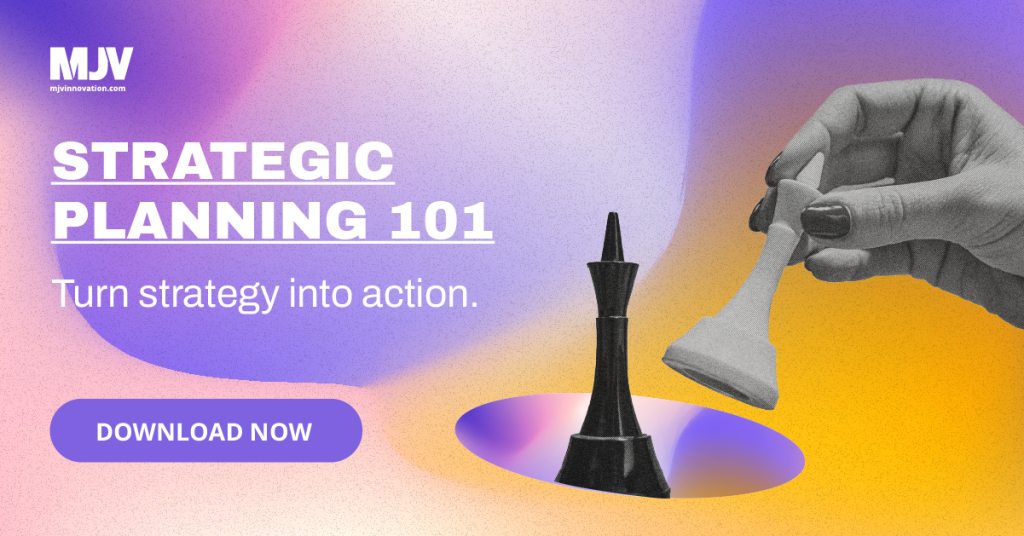Since the market’s moods can change in the blink of an eye, the most challenging thing in a strategic plan today is to create a plan flexible enough to absorb changes along the way.
So, don’t expect to see more of the same here, when it comes to strategic planning. We’re not into annoying you with traditional, formal documents. Instead, we aim to update you with the most modern concepts to help you drive successful campaigns in the modern business era.
Read on and find out 5 valuable tips on how to build accurate strategic plans.
First of All, What Is a Strategy Plan Nowadays?
A strategic plan is a business tool related to the adjustment of the organization to changes within the business environment. It works as a roadmap that highlights the company’s strengths and limitations, indicating what efforts are necessary to reach where it expects in a given period.
Of course, you can use traditional tools, such as a SWOT analysis matrix, or a business model canvas if you want to outline a new business product/service or feature.
But modern strategic planning is more about knowing how to change the course of the wind and pivot if things don’t go as expected, as opposed to using tools A, B, C, or religiously following a set plan.
Naturally, each company will have its own priorities, but the most important thing is to be sure you fully know yours.
What are the benefits of a strategy plan?
Benefits of a strategic plan include:
- Bring a clear vision of where the company is and where it wants to go
- Identify market opportunities
- Allows quicker more assertive decisions
- Guide the prioritizing of management allocation
- Maps possible business risks, allowing the creation of preventive action plans
And, ultimately, others advantages regarding traditional business pain points, such as saving resources, for example, by reducing costs and time.
What are the key points to creating a strategic plan?
During the last decade, mobile consumption, the consolidation of startups and BigTechs, and the COVID-19 pandemic completely changed the course of global markets.
As a result, we’ve seen the rise — and fall — of several business models and entire industries incorporating new revenue models in an ever-changing business environment.
Nassim Nicholas Taleb, the well-known author, mathematician and statistician, coined the term antifragile in 2012, related to how we should behave in the face of those challenges. It’s related to VUCA, BANI, and other chaos-based theories.
In the eponymous book, Taleb talks about people and organizations that, when faced with challenging situations, create a “shell of experience” to better prepare to face other turbulent times — and even grow.
For this reason, we would like to emphasize 4 essential features of any type of plan you make:
• Adaptability
• Flexibility
• Resilience
• Antifragility
This is the keynote of modern business plans and strategic planning.
Now that we’ve got you covered with strategic plan standards, let’s get down to business. Check out our 5 tips for creating an accurate strategic plan — a plan to guide your business growth in 2023 and beyond!
1) Define your OKRs
Much is said in the market about having a moonshot vision. But do you know what it is all about? A Moonshot is a motivational, inspiring speech, anchored in 3 elements:
- The resolution of a great challenge
- Through an unprecedented or complex solution
- Supported by breakthrough technology.
It all started in 1962, when the then-president, John F. Kennedy, gave a speech in which he stated:
“We decided to go to the moon this decade.”
At that moment Kennedy challenged the entire nation to rethink the limits of what was possible. Eight years later, in 1970, Neil Armstrong and Buzz Aldrin actually landed Apollo 11 on lunar soil.
But how NASA could keep scientists and engineers motivated to transform a barely viable idea into something tangible?
Basically, we are looking to tell the story that history fails to mention all the invisible work that happened to make it there. It’s not like Kennedy ordered a trip to the moon and just walked out of the room. It was necessary to:
- Maintain close alignment with the “global objective” of the “US company”
- Test quickly
- And correct any deviation along the way.
A moonshot without checkpoints is just a dream. This leads us to OKRs.
OKR stands for Objectives and Key Results. Its main characteristics are communication and alignment. OKRs are used to structure short, medium and long-term goals, which is essential for teams to stay focused and not get lost along the way.
They work like this:
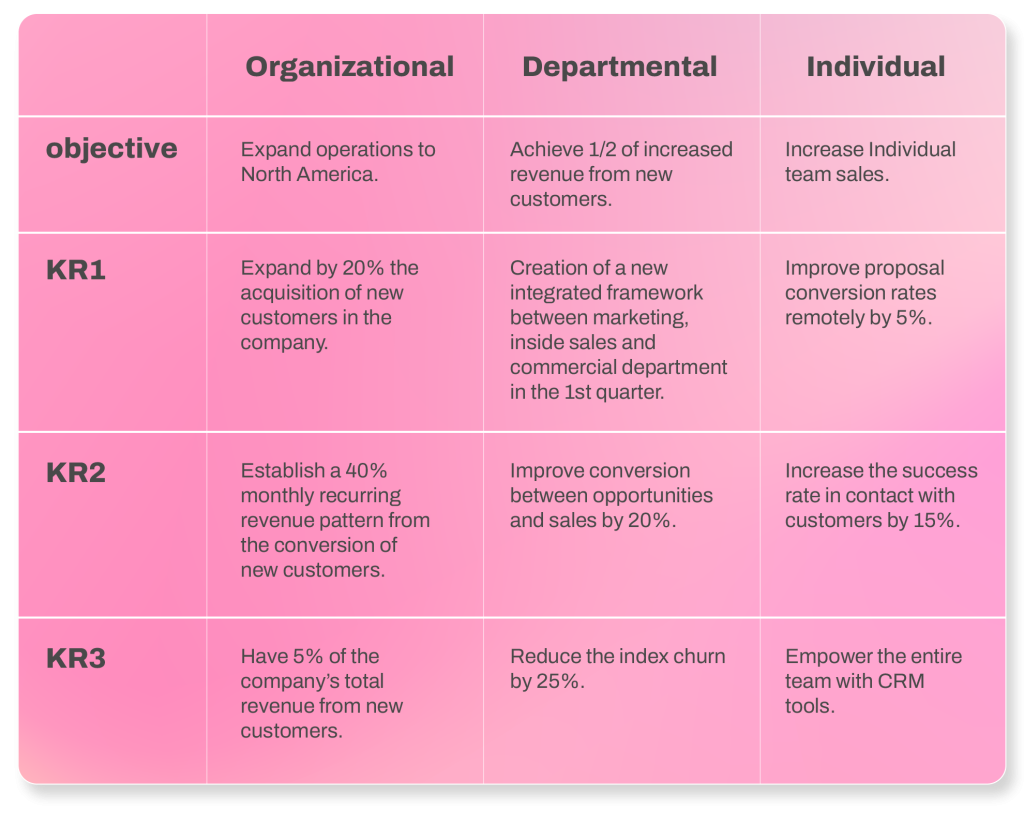
Therefore, if a company really wants to guide how its employees are going to achieve these goals and avoid them sailing adrift, it should:
- Create specific goals for each sector;
- Align expectations with area leaders;
- Understand whether business units have the resources needed to make it happen.
“OK, but how to do this?” You’re lucky. We have the right content to help you create your own OKRs.
2) What gets measured, gets improved. But measure what matters.
Building a culture of continuous improvement cycles is the key to leveraging your product, service, or solution. But to make this process work, you need to get concrete answers.
And the way to get those answers is to measure the impact of carried-out actions.
But avoid falling into the trap of measuring every detail. This will lead you to an accumulation logic, in which you will stack step by step.
Measurements serve precisely to answer whether the actions had the expected results. And not to plaster your efforts with more requirements than necessary. The key here is to measure what matters.
If your company still doesn’t have a culture of measuring results or have the required data-maturity (and here you must be really sincere in your assessment), we suggest you take a single step: think about it from day one.
Set a success concept, and choose which tools will be used to measure this. This tip helps us introduce the next one.
3) Test, test and test
When companies genuinely have a moonshot to accomplish, they cannot afford not to test all possibilities, or discard them without seeing them in practice.
Have you ever heard that 20% of the work is responsible for 80% of the results? There is no proper science on it, but it can enlighten a conversation about putting the efforts and resources where we most need them.
And when we’re talking about “creating a testing mat”, we’re talking about prioritizing work, doing more of what works more.
But how to achieve this level of mastery? Testing. And, yes, we mean trial and error. Or better: trial, learning, and achievements.
The plot twist here is: experiment, fail fast, throw in the garbage what doesn’t work, and go for the next. This is the main standard of what we call a Discovery process. And it’s not by chance.
Testing is the tangible mindset behind the dawn of a culture of feedback. It also holds close relation to the continuous improvement cycles already mentioned in Tip 2 — and, of course, with measuring your efforts as well.
4) Make business agility a weapon
Born in IT departments, Agile has successfully adapted to many different contexts. In fact, Agile’s first impressions and results were so beneficial that it rapidly spread throughout several business areas.
The agile mindset, tools, and practices can help you to notice sensible changes in the short-term, as well as witness great results in mid/long-term adoption.
Take the work we’ve done at a Reward & Loyalty Program company, for example. Just by using a squad running agile frameworks 24/7 and proper management, they could increase the company’s productivity and results by up to 100% in just 28 days. Click here to see how they did it.
The changes spearheaded by Scrum were crucial to transform Agile into the exponent of modern project management. This sentence could be seen as quite controversial if it were not supported by facts: any new company that arises in any part of the globe is born under the agile principles — not Waterfall.
But you don’t need to just believe us. Trust the numbers:

Also: Agile projects also have a 64% success rate. This is more than any other management model. Waterfall’s success rate, for example, is around 49%.
As you saw, at the operational and tactical level, there is no longer any question that agile could not overcome.
But, because it has such impressive results, we often don’t pay proper attention to the entire transformational potential of Agile when we decide to take it to the next level.
Agile governance on an organizational scale is capable of offering results that are way off the curve. And the good part is that the success of agile cells spreads to other industries very quickly.
But Agile works beyond that. There is a component that is in the background in relation to the great transformations in productivity and results that Agile provides – but that acts in parallel to this.
Its change management as a function is a crucial tool for the success of strategic actions.

Understand better in this article about business agility.
5) Respond is no longer enough. Anticipate
The only certainty we have is uncertainty.
In an ever-changing environment, responding to change is not enough. You need to anticipate them as much as possible.
Long-term plans tend to be completely devastated by market unpredictability. If your strategic plan doesn’t change from Q1 to Q2, or from Q2 to Q3, you’re probably missing something important.
The secret of building successful plans is to keep changing them as much as necessary. So, be suspicious of your plan. Take periodic moments with your team to adjust from time to time.
Do you see how this connects with other tips? Measurement, continuous learning cycle, testing…
Plan like your business depends on it. Pivot as much as you need to get there. Know the time to throw something away, and add-up new things. Plan dirty.
Two Additional Tips on Strategic Planning
Last, but not least, we’d like to leave you with 2 additional tips:
Have a strategy
According to Freek Vermuelen, a Harvard Business Review contributor, many strategies often fail because they’re not actually strategies. Do not confuse strategy and objectives. If you need your employees/team to achieve great results, be ready to change your strategy along the way.
Let’s take a step back at Kennedy’s moonshot. That was an unprecedented accomplishment at the time. So, anything that was done until that moment was sufficient. You need to ask yourself: what we’re doing today will help lead us there? If not, you need to make changes to your default.
Take care of your culture
Every change generates a cultural transformation, which is largely underestimated in organizations. The acculturation process about how the company will be should not be guided from the bottom up, which sometimes occurs due to the proximity of the teams with operational and tactical issues.
Final Words
At this point, you’ve probably understood the relevance of creating flexible and adaptive planning and strategies.
To get you inspired, we’d like to use Bruce Lee’s quote to illustrate what we’re trying to say.
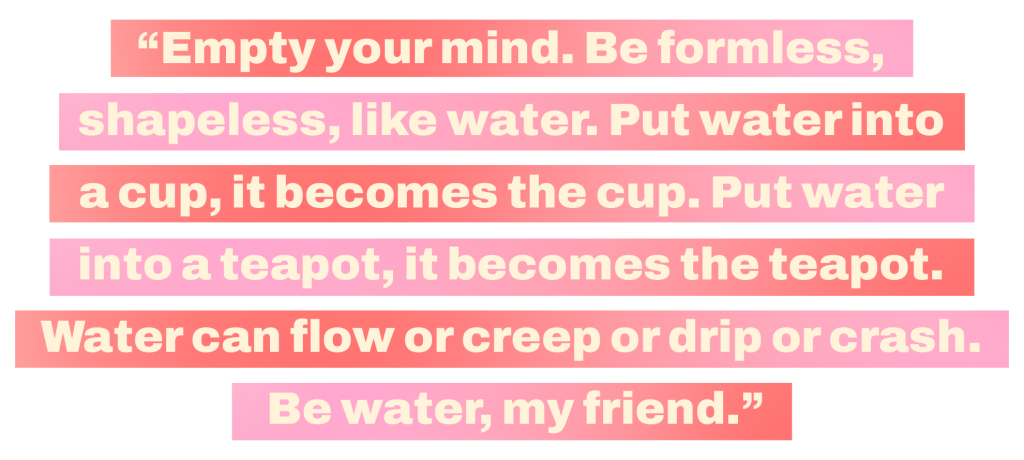
There is a touch of logic and even scientism in this poetry: what is very rigid, breaks with tension. What is flexible, and malleable, tends to withstand pressure without difficulty.
As we said at the beginning of this article, we strongly recommend that you think in your plan more like a lighthouse, than something written in stone. Remember to create something flexible; and be water.
MJV has been working for 25 years helping some of the largest companies in the world to create flexible strategy plans focused on anticipating risks. Talk to one of our consultants and learn more.

